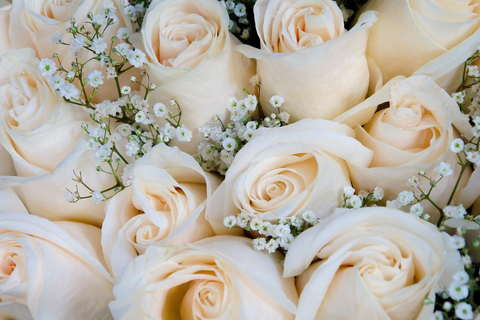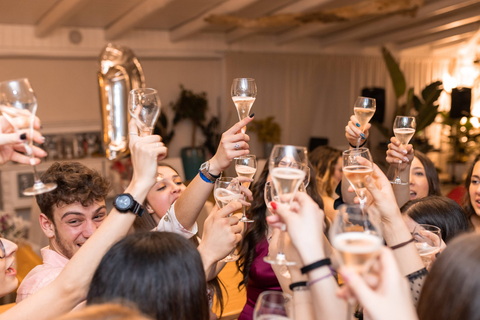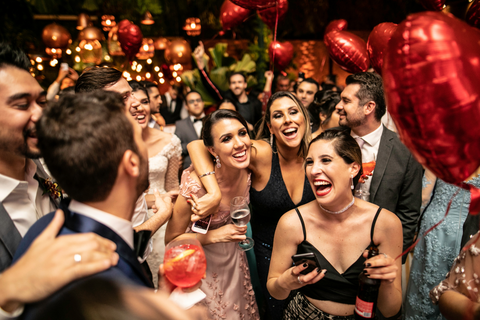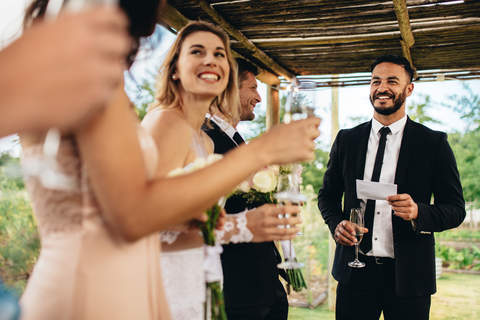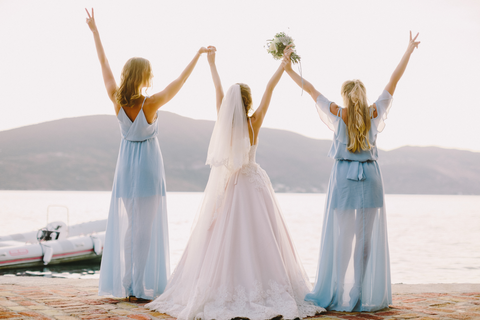Wedding guests often find themselves in a dilemma while selecting the perfect attire for the special occasion. As weddings are a celebration of love and unity, it is important to adhere to certain traditions to show respect for the couple's big day. One of these traditions involves avoiding taboo colors that may disrupt the harmony of the event.
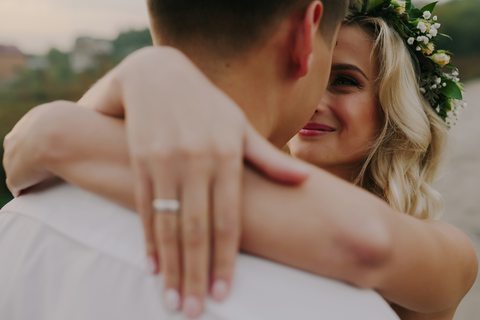
Understanding Wedding Attire Etiquette
Cultural Significance of Colors
When attending a wedding, it is important to be aware of the cultural significance of certain colors. In various cultures, specific colors hold symbolic meanings and can influence the perception of one's attire. For example, in Chinese culture, red is considered as the color of luck and happiness, often making it a common color for wedding attire. Conversely, in Western culture, red might be viewed as too bold and attention-grabbing for a wedding.
Another example is the color white, which has contrasting symbolism in different cultures. In Western weddings, white is usually reserved for the bride to symbolize purity and innocence. Thus, wearing white as a guest in a Western wedding may be seen as disrespectful and competing with the bride's appearance. On the other hand, white is a traditional color of mourning in some Eastern countries, so wearing white to an Eastern wedding could be perceived as a sign of bad luck.
General Rules for Guest Attire
When selecting the appropriate attire for a wedding, there are several general rules to follow, regardless of cultural context:
- Respect the dress code: Adhere to any specific dress code mentioned in the wedding invitation to show respect for the couple's wishes. Common dress codes may include formal, semi-formal, or casual attire.
- Avoid attention-seeking outfits: As a wedding guest, it's important not to take the spotlight from the couple. This generally means avoiding outfits that are too revealing, excessively embellished, or ostentatious.
- Be mindful of the venue: Consider the location of the wedding when choosing the appropriate outfit. If it's a beach or garden wedding, opt for lighter fabrics and comfortable footwear, while for a place of worship, consider modest and respectable attire.
- Consider the time of day: Daytime weddings generally call for lighter colors and more relaxed attire, while evening weddings typically require darker, more formal outfits.
- Accessorize appropriately: Accessories can enhance a wedding outfit but avoid anything too flashy or noisy, as it can be distracting during the ceremony.
By considering the cultural significance of colors and following these general rules for guest attire, one can show respect to the couple, their families, and their traditions. Ultimately, the goal is to strike a balance between looking presentable and not detracting from the couple's special day.
Why White Is Off-Limits
The Bride's Domain
The tradition of wearing a white wedding dress dates back to Queen Victoria's wedding in 1840, and it has since become a symbol of purity and innocence. As a guest, wearing white to a wedding is considered a major faux pas because it can be seen as an attempt to upstage or overshadow the bride.
At most weddings, the bride's attire is one of the major highlights, and it is crucial that guests respect her choice and refrain from wearing anything that might compete with her gown. This includes not only the color white but also other shades of off-white, ivory, and champagne.
Variations of White to Avoid
When attending a wedding, it is important to avoid wearing any color that might be too close to white or off-white. The most common shades that should be avoided are:
- Ivory: A pale-yellowish shade of white
- Champagne: A warm beige color with a hint of gold
- Off-White: A shade of white with a grey or beige undertone
- Cream: A pale and slightly yellowish shade of white
Abiding by the wedding dress code and avoiding these colors shows respect for the occasion and the couple. An easy way to ensure you're following proper etiquette is to consider the following color guidelines for wedding guests:
| Colors to Avoid | Acceptable Colors |
|---|---|
| White | Jewel Tones |
| Ivory | Pastels |
| Champagne | Earth Tones |
| Off-White | Bold Patterns |
| Cream | Neutrals (excluding those mentioned above) |
In some cases, like a white party wedding, the couple may specifically request that guests wear white, making it an exception to the rule. However, unless specifically mentioned in the invitation, it is best to avoid wearing white to a wedding to ensure you are respecting the bride's special day.
Other Colors to Steer Clear Of
Black and Funerals
Although black is a classic and sophisticated color, it holds a certain association with funerals. This connection makes it one of the taboo colors for wedding guests. Wearing black may convey a feeling of mourning or sadness, which might not be the most appropriate message for a joyous event like a wedding. Exceptions can be made if the wedding has a specific theme or if the bridal couple has requested that guests wear black.
Avoiding Red's Attraction
Red is often associated with passion, love, and desire, but it is also considered a highly attracting color. Wearing red as a wedding guest could inadvertently put the limelight on you instead of the bride, groom, and the bridal party. To ensure that you do not draw too much attention, try to avoid bright reds, especially when it comes to bridesmaid dresses. Opt for more subdued shades like burgundy or choose outfits with less sparkle and minimal use of sequins and glitter.
The Debate on Darker Colors
Darker colors, such as navy blue, dark green, or deep purple, are other options to consider with caution. While these colors may not be as taboo as black, they can still be perceived as somber and may not fit the theme of the wedding. On the other hand, neon colors are too attention-grabbing and distracting, making them inappropriate choices for wedding attire.
To determine the best color for your outfit, try to find out the wedding's theme and color palette beforehand. Opt for colors that complement the wedding's atmosphere and do not clash with the bridal party's attire. Remember, the goal is to celebrate the love between the bride and groom, so avoiding any distracting or taboo colors is essential to maintain harmony and ensure a memorable day for the happy couple.
Acceptable Wedding Guest Colors
Embracing Pastel and Earth Tones
When it comes to attending a wedding, choosing the right colors for your outfit is essential. Pastel hues and earth tones are often safe options for both men and women. These colors include shades like mint green, baby blue, sage, eggshell, and beige, which are complementary to the bride and groom, yet allow you to stand out subtly.
In warm weather or summer weddings, these colors create an aura of elegance and class for both male and female guests. For added sophistication, men might opt for champagne or gold accents on ties and pocket squares, while women can incorporate subtle metallic hints in their jewelry or accessories.
Bold Colors With Care
Venturing into bold colors is possible but requires caution. Classic choices like navy blue and emerald green can be fantastic alternatives for both men and women, especially when attending religious weddings. These colors exude a sense of respect and modesty, making them ideal for such occasions.
However, it's important to remember not to overshadow the couple with overly vibrant colors. Mixing in a pop of color with neutral shades is an effective way to wear bold tones. For example, men can don a bright tie or pocket square paired with a dark suit, while women can accessorize with colorful shoes or statement jewelry.
Patterns and Prints Guidelines
When it comes to patterns and prints, there are a few simple rules to follow for wedding guests:
- Keep it tasteful: Avoid overly flashy or loud designs.
- Consider the wedding theme: Try to match your attire with the overall ambiance (e.g., floral prints for a garden wedding).
- Size matters: For both men and women, smaller, more refined prints are better for maintaining a polished look.
Ultimately, choosing the right colors and patterns for a wedding requires balance and an understanding of the event's setting. By selecting complementary colors and keeping patterns tasteful, you'll strike the perfect balance between standing out and fitting in.
Navigating Dress Code and Requests
Wedding Invitation Clues
When it comes to understanding the appropriate attire for a wedding, the wedding invitation usually provides vital clues. Pay close attention to the details, such as the venue, time of day, and any specific dress code mentioned. For instance, if the invitation states "black tie," it is best to avoid wearing any taboo colors that might clash with the event's formality.
In addition to the invitation, take note of the wedding theme's colors. Sometimes, these colors are mentioned explicitly, while other times, they will be subtly hinted through the invitation's design. It's always wise to stay away from colors that might clash with or match the bridesmaid dresses too closely.
When to Ask the Hosts
If the wedding invitation does not provide enough information about the dress code, it is perfectly acceptable to ask the hosts for guidance. However, it is vital to do so with tact and respect. Instead of directly asking if a specific color is off-limits, consider inquiring about the overall color scheme or if the hosts have any specific preferences or requests.
Here's a simple approach to seek clarification on the wedding dress code:
- Reach out to the hosts, preferably through a phone call or a face-to-face conversation.
- Express your excitement for their big day and compliments about the invitation.
- Ask for any dress code preferences or requests that might not be mentioned in the invitation.
Remember, seeking clarification on the dress code is not a sign of ignorance but a gesture of respect for the hosts' vision for their special day. By following the invitation clues and asking the right questions, you can confidently navigate the dress code and ensure that your attire is appropriate for the wedding celebration.









